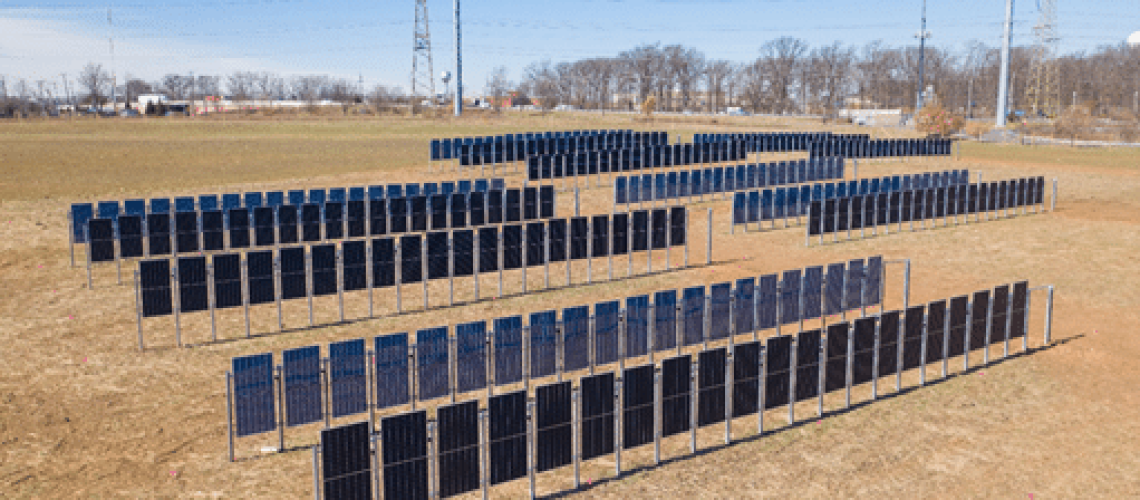Rutgers reports that the vertical system fits well with the aim of the project, which is to study the benefits of agrivoltaics where there is a large energy demand and limited space.
Rutgers University’s 170 kW agrivoltaic project on its farm on the Cook campus in New Brunswick, New Jersey features a vertical solar installation designed by California-based Sunstall.
The farm operates as a production farm, research facility and teaching operation in support of the Rutgers School of Environmental and Biological Sciences and Rutgers New Jersey Agricultural Experiment Station related activities. At the farm, students, faculty and staff care for a variety of animals, including sheep, goats and cattle.
Agrivoltaics refers to the dual use of land for agriculture and solar energy generation, and the Rutgers farm is an example of such dual use, where a forage crop will be planted and beef cattle will graze between rows of solar modules. The design includes animal shelters that provide a shade area, animal drinking facilities, and a handling chute for safely managing large animals. Rutgers reports that the objective is to study the impacts of the agrivoltaic system on forage production and animal grazing, including any behavioral changes the animals may exhibit when grazing among the panels.
Results from the project will contribute to the Dual-Use Solar Energy Pilot Program administered by the New Jersey Board of Public Utilities (NJBPU). The New Jersey Agricultural Experiment Station received $2 million from the state for building research and demonstration agrivoltaic systems on its Research Farms.
Sunstall chose New Jersey-based developer and EPC contractor Advanced Solar Products as the installer. The vertical racking system from Sunzaun will consist of 18 rows of 21 solar modules, mounted in rows running north to south, enabling the system to receive sunlight from east and west.
The Sunzaun vertical racking system will hold bifacial solar modules that produce energy from both sides of the vertically oriented array.
The project will use ZnShine 450 W bifacial solar modules with a bifaciality rating of 70%. The system is designed to mount the modules using holes in the module frames, enabling them to be attached to two piles without the need for a heavy racking system.
This is not the first Sunzaun vertical agrivoltaic system in the U.S. Another example can be found in a vineyard in Somerset, California, where Sunstall installed 43 450 W modules on Sunzaun vertical solar arrays.
Agrivoltaics have been found to have other benefits as well, such as reducing water evaporation from the soil. A research group led by the University of Liège in Belgium studied this and verified that the vertical PV system could reduce water demand for the irrigated main crops. In addition, agrivoltaics can help meet the U.S. clean energy goals. Research by Oregon State University found that solar and agricultural co-location could provide 20% of the total electricity generation in the United States. Wide-scale installation of agrivoltaics could lead to an annual reduction of 330,000 tons of carbon dioxide emissions while “minimally” impacting crop yield, the researchers said.



